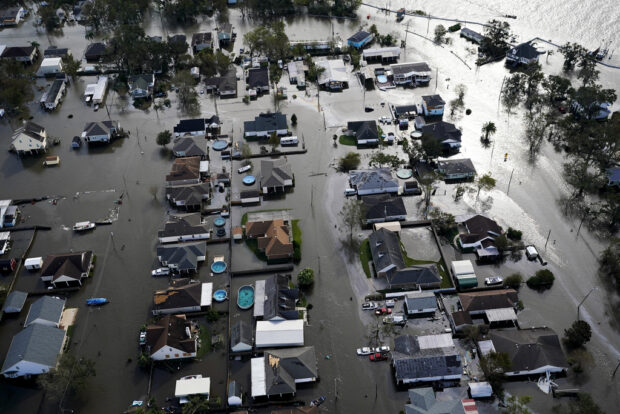FEMA’s National Flood Insurance Program (NFIP) substantially improved ratemaking by implementing Risk Rating 2.0 in 2021, but the program faces a potentially significant premium shortfall, a study by the U.S. Government Accountability Office (GAO) found.
Published ahead of reauthorization of the NFIP, which is set to expire on Sept. 30, the report from GAO examines the actuarial soundness of Risk Rating 2.0 and efforts to address affordability for policyholders.
GAO recommends Congress consider changes to NFIP, including establishing affordability assistance for flood insurance through a means-based program rather than through caps on annual premium increases.
FEMA created Risk Rating 2.0 as an effort to modernize NFIP using actuarial principals that reflect a property’s flood risk. Risk Rating 2.0 accounts for more sources of flooding as well as the replacement cost value of a property. FEMA began implementing Risk Rating 2.0 on new policies in October 2021, while all remaining policies renewed on or after April 2022 were renewed into the ratemaking methodology.
By December 2022, the median annual premium was $689, GAO found. This will need to increase to $1,288 to reach full risk. About one-third of policyholders are already paying full-risk premiums.
Two-thirds of NFIP policies that had renewed since April 1, 2022, were on what FEMA refers to as a glidepath, where annual premium increases are capped at 18 percent. Though caps help address some affordability concerns in the near term, the study found caps perpetuate an unfunded premium shortfall and poorly address affordability.
GAO estimates it would take until 2037 for 95 percent of current policies to reach full-risk premiums, resulting in a $27 billion premium shortfall. The study said that costs of shortfalls are not recognized in the federal budget and become evident only when NFIP must borrow from the Department of the Treasury after a catastrophic flood event.
Additionally, GAO said that caps are not cost-effective because some policyholders who do not need assistance likely are still receiving it. “Concurrently, some policyholders needing assistance likely are not receiving it, and the discounts will gradually disappear as premiums transition to full risk,” the report said. Caps also undercut the private market by keeping NFIP premiums artificially low, GAO added.
GAO recommends Congress consider implementing a means-based assistance program that would provide financial assistance to policyholders based on their ability to pay, making costs transparent in the federal budget.
Other Recommendations
GAO provides other recommendations for congressional consideration, including:
- Addressing NFIP’s current debt—for example, by canceling it or modifying repayment terms—and potential for future debt
- Authorizing and requiring FEMA to revise NFIP rules hindering the private market related to (1) continuous coverage and (2) partial refunds for midterm cancellations.
- Replacing discounted premiums with a means-based assistance program that is reflected in the federal budget.
GAO also recommends five changes to FEMA, including that it publish an annual report on NFIP’s actuarial soundness and fiscal outlook.
Photo: Louisiana homes in the aftermath of Hurricane Ida in August 2021 (AP Photo/David J. Phillip, File)





















 Why Insurance Telematics Integrations Fail
Why Insurance Telematics Integrations Fail  Artificial Intelligence Is Rewriting the Rules for Commercial Lines
Artificial Intelligence Is Rewriting the Rules for Commercial Lines  Examining 5 Key Factors Fueling MGA Growth—and Emerging Challenges Ahead
Examining 5 Key Factors Fueling MGA Growth—and Emerging Challenges Ahead  Insurance Industry ‘Megadeals’ Dominate 2025, Says PwC
Insurance Industry ‘Megadeals’ Dominate 2025, Says PwC 